
It’s also a time for great gifts. Let’s dish! We’ve got a luscious array of gems in tones of pomegranate, grape, apples and honey, as well as ready-to-wear rings and more.
Not to mention candy-pink gems for her upcoming Bat Mitzvah, or as a sweet gift for your Valentine.
See our ad in The Jewish Journal for Rosh Hashanah special offer.
September 18 is Rosh Hashanah!
Major holidays call for jewelry. And Jewish New Year, Rosh Hashanah, is no exception.
A frequent greeting is “Shanah Tovah Umetukah”, meaning “Have a good and sweet year.” Natural sweets -- apples, honey and honey cake, plump dates, pomegranates and dark, sweet kosher wines rule the feasting table for this joyful two-day celebration which initiates the Jewish High holidays.
New Year – Rosh Hashanah literally means the “head of the year”, and is celebrated by blowing a ram’s horn—is followed by Yom Kippur, which is the Day of Atonement and considered the most sacred day in the Jewish calendar.
Juicy Gems
One thing is clear:
The new year is a time for celebration. This Rosh Hashanah marks the year 5781 C.E., so, to quote Rabbi Hillel, if not now, when?
(And if not now, how about for that upcoming Bat Mitzvah, wedding anniversary or birthday?)
The new year is the perfect occasion to select a ring or other piece of high jewelry, or choose a loose, precious gemstone from those we curate from around the world.
We can design your jewelry together! Call us for a free consultation.
Meanwhile, here’s some Judaica-inspired jewelry guidance:
POMEGRANATES
The pomegranate or Rimon has a soulful place on the Jewish table, and across the Middle East in sister cultures as well.
On the Rosh table, it’s called a “new fruit”, meaning that it has just come into season.
Anyone who’s spent much time in the regions from Israel to Southern Spain knows this fruit with its tart, glossy, red-purple arils (seeds encased in juicy pulp) that leave an indelible stain.
Our word “garnet” is related to the word pomegranate, since the stone resembles an aril.
In Judaic scripture and culture, the pomegranate is identified in Torah as one of the “seven species” indigenous to the holy land, with the earliest records of cultivation of the fruit being in Iran and Afghanistan.
In the Song of Songs (sometimes called the Song of Solomon), the blushing cheeks of the bride behind her veil are compared to halves of a pomegranate.
The pomegranate also has a specific meaning to Jews, who, unlike the rest of the world, don’t have to wonder how many seeds the fruit contains. The answer: 613.
You’ve probably heard of the Top Ten – The Ten Commandments—but the Law of Moses or the Torah, appearing primarily in the Books of Leviticus and Deuteronomy, consists of a total of 613 laws which must be observed by pious Jews throughout the year.
These laws range from the mysterious, to the spooky, to the simply pragmatic: not weaving together wool and linen in the same garment (#551); not attempting to contact the dead (#511); the need to place a guard-rail around a flat roof (#547).
Thus, eating pomegranate seeds and drinking the brilliant, antioxidant juice of this ancient fruit seals the oath to follow God’s laws in the blessed new year, in order to live a life of fruitfulness (literally!) and abundance.
One seed for every “mitzvah”: (law) to be observed.
Prayer-shawls worn by observant Jews (the fringes known as “tzizit”, the prayer-shawl itself known as “tallit”) are carefully hand-sewn with the number of knots adding up to 613.
Rabbi Maimonides’ list of the 613 “mitzvoth” (plural of mitzvah) is the most well-accepted, but not surprisingly, Rabbinic opinion on the matter is not unanimous…nu?
Moving from the Rabbinic to the secular artistic, many oral histories attribute the brilliant red-purple color of classical Persian rugs to pomegranates, stating that the fruit was used as dye.
The tangy, vibrant fruit is prominent in Persian cuisine and is also associated with the lasting historical mark of Arab military force. The Spanish fortress-city of Granada, whose name means “pomegranate” in Spanish, is considered an enduring testament to the might of Arab conquest and dominance of the Iberian Peninsula.
This Andalusian influence spread as far as Mexico and the rest of North America with La Conquista, or the conquest of North America by Europeans, notably Spaniards.
Hernan Cortes, a Spanish Conquistador, brought many treasures with him when his boot-heels hit Mexican soil in 1518 C.E., the pomegranate among them (hoofstock meaning horses, goats, cows and sheep, silver-smithing, and the wheel were also well-received).
In fact, the pomegranate is present in the contemporary jewelry art of the American Southwest today in what is called a “squash blossom.” Botanists may bicker, but the design of this popular flared bead, central to the sterling silver jewelry masterpieces of the Navajo, Zuni and Hopi nations, is a direct copy of the pomegranate shape used in many noble Spanish family crests, and worn as part of a Conquistador’s formal dress armor.
PICK A GEM!
Pomegranate Pick: Natural Madagascar Ruby, 3.53 carats
Juicy Jewel: Natural Purple Garnet Cushion Cut, 4.08 carats
Wine-tasting: Natural Purple Garnet Emerald Cut, 3.00 carats
READY TO WEAR!
Natural Purple Garnet Ring, 7.32 carats, set in 18 karat white gold with white diamonds
APPLES
The Rosh Hashanah tradition of dipping apples in honey dates back at least as far as the writings of Rabbi Jacob ben Asher, who codified Jewish law in the 1300s C.E.
Baked apples drenched with honey are also a favorite, especially for kids.
LOOSE GEMS!
Candy-apple Red: Natural Mahenge Neon Red Spinel, Round Cut, 1.33 carats
Fall’s Freshest: Natural Heated Ruby, Oval Cut, 4.57 carats
HONEY
Honey cakes, spiced with cloves and cinnamon and stuffed with walnuts, are generations-old Rosh standards.
At Rosh Hashanah, honey is often added to the grand braided loaves of bread called Challah, always the centerpiece of every Sabbath table.
LOOSE GEMS!
Honey Dip: Natural Orange Tourmaline Cushion Cut, 4.32 carats
Sunny Honey: Natural Unheated Yellow Sapphire, Oval Cut, 6.08 carats
Start your new year off sweet and juicy with a gorgeous precious gem in a mouthwatering color.
L’Chaim!

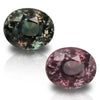 Alexandrite
Alexandrite Amethyst
Amethyst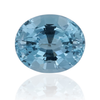 Aquamarine
Aquamarine Chrysoberyl
Chrysoberyl Demantoid
Demantoid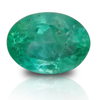 Emerald
Emerald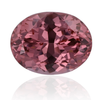 Garnet
Garnet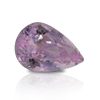 Kunzite
Kunzite Paraiba
Paraiba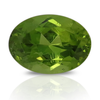 Peridot
Peridot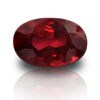 Ruby
Ruby Sapphire
Sapphire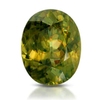 Sphene
Sphene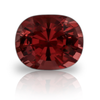 Spinel
Spinel Tanzanite
Tanzanite Topaz
Topaz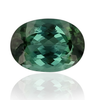 Tourmaline
Tourmaline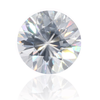 Zircon
Zircon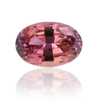 Zoisite
Zoisite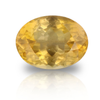 Rare Gemstones
Rare Gemstones Heart Shape
Heart Shape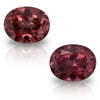 Matched Duo
Matched Duo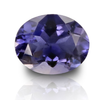 Everyday Candy
Everyday Candy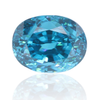 Insta Therapy
Insta Therapy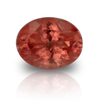 Mini-Splurge
Mini-Splurge